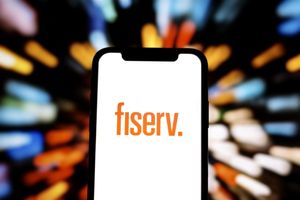Why Is It Important To Prepare for an Interview?

Get To Know These Tips for Making a Good Impression
A job interview can be daunting and nerve-wracking, and many interviewees feel intimidated, especially in one-on-one situations. The good news is that interviewers have clear goals to identify the right person for the role which they’re recruiting for.
If you know what they are looking for, then you already have an edge on other candidates and can increase your chances of making a good impression. But this involves studying the landscape carefully – hence the importance of preparing for an interview.
This preparation works in two main ways. The first makes good use of social techniques, such as body language and appearing polite and engaged, which is vital to projecting the right image.
The second covers the technical aspects, and shows the interviewer that you have what it takes to do the job. Let’s look at both methods in greater detail.
Technical Aspects
Know What You Are Applying For
You’d be surprised to learn how many people show up to job interviews with little knowledge of the role’s fundamental tasks. Make sure you are aware of what the company is looking for, and organize your thoughts to make this awareness clear.
Show that you know what is required of you, and that you have the necessary qualities. Don’t be afraid to sound pretentious – now is the time to sell yourself and highlight your strengths.
Research the Company and, if Possible, the Interviewer
Make sure you have a general understanding of how the company you are applying to operates, its mission and values, key figures, and goals. A classic question during job interviews is: “Why do you want to work for us?”
Stand out by answering it in a way that shows you know the company well. Citing details shows that you are interested in the role and familiar with the company’s business culture.
Similarly, if you know who will be leading the interview ahead of time, try to learn more about them. LinkedIn is a good place to start. In addition to making you more comfortable, it can help you understand their background and consider communication strategies based on their personality.
Anticipate Common Questions and Prepare Your Answers
We highlighted one frequently asked question above, but several others often appear in interviews. These include questions about your previous job, why you left, how you deal with challenging situations, your qualities and weaknesses, future career expectations, and how you deal with coworkers.
Be sure to have an insightful answer for each prepared in advance, since it can be hard to think of a good comeback in such a stressful situation.
Know Your Story
The interviewer will have your resume at hand, but this is merely a summary of your academic and professional trajectory to date. To stand out, fashion a narrative that shows who you are and how you got here.
Interviewers are trying to know you, so be sure to address that by providing personal details that paint an accurate picture.
Having said that, keep in mind that they are looking for a professional, and that’s where the focus should be. A good strategy to adopt is the elevator pitch: short, straight to the point, and effective. To craft this pitch, you can make a flowchart with the main points you want to discuss and structure them logically.
Social Techniques
Body Language
Your body reveals a lot about what you are feeling now. Pay attention to your posture, and show that you are comfortable and open to the interviewers. Sit straight, with your torso directly facing the person you are talking to, and avoid crossing your arms.
Speak in a firm voice and at a comfortable pace: not too slow or fast. If you have to glance at your notes, do so quickly and always look at the interviewer when talking. A great tip is to do breathing exercises before entering the room, to help you relax and avoid overthinking.
How to Dress
This is a common question around job interviews. Formal clothes are a safe bet. But bear in mind the business culture in question – the dress code for an interview at a bank would be considered overdressing at a startup. So there are no definitive answers here. Try to get a sense of what’s appropriate during your research into the company you’re interviewing for, and if you’re still unsure, feel free to ask the recruiter about the dress code.
Practice
Finally, be bold and practice your answers and what you want to share during the meeting. You can do this in front of a mirror, with one eye on your body language. By preparing for an interview through various simulations ahead of the big day, you will be more confident and perform better during the real thing.
Prepare Some Questions of Your Own
When preparing for an interview, it is normal to have some doubts about the company, the role, and even minor bureaucratic details. You have the right to ask questions, and doing so indicates that you are curious to know more, and have an inquisitive personality. Asking insightful questions will make a good impression.
Featured Image: Unsplash @ Tim Gouw
Read more investing news on PressReach.com.Subscribe to the PressReach RSS feeds:- Featured News RSS feed
- Investing News RSS feed
- Daily Press Releases RSS feed
- Trading Tips RSS feed
- Investing Videos RSS feed
Follow PressReach on Twitter
Follow PressReach on TikTok
Follow PressReach on Instagram
Subscribe to us on Youtube
More News
View More




Recent Quotes
View More
Quotes delayed at least 20 minutes.
By accessing this page, you agree to the Privacy Policy and Terms Of Service.